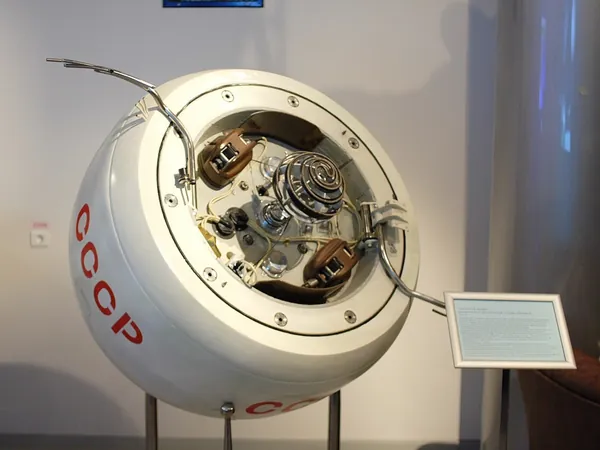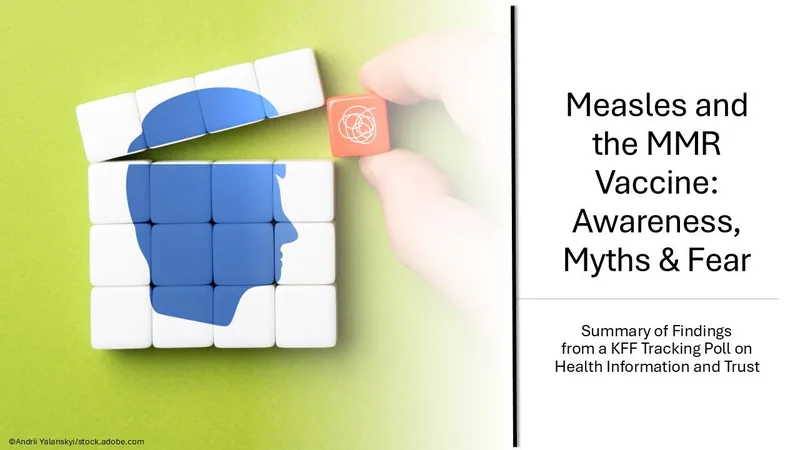
Breakthrough Study Unveils Flaws in Theories of High-Temperature Superconductivity
2025-04-09
Author: Nur
A New Dawn for Superconductivity Research
Superconductivity—the remarkable ability of certain materials to conduct electricity without energy loss—promises revolutionary advancements in technologies, from ultra-efficient power grids to cutting-edge quantum devices. However, a baffling mystery has lingered in the world of superconductivity: understanding high-temperature superconductivity in cuprates.
Revolutionary Findings from Stanford Researchers
A recent publication in Physical Review Letters from scientists at the Stanford Institute for Materials and Energy Sciences (SIMES) at SLAC National Accelerator Laboratory reveals significant shortcomings in the widely accepted Hubbard model, currently the leading theoretical framework for explaining electron interactions in quantum materials. This new research reinforces previous findings from SLAC studies, showing that the Hubbard model fails to account for electron dynamics in even simplified one-dimensional (1D) systems of cuprates.
Trailing decades of research, lead author Jiarui Li, a postdoc at SLAC, expressed enthusiasm about continuing to explore this critical problem. "High-temperature superconductivity in cuprates has puzzled scientists for years, and we are building on the incredible groundwork of many who came before us at SLAC and Stanford," he stated.
Why Cuprates Are Special
Traditional superconductivity occurs at frigid temperatures close to absolute zero—around -273°C or -459°F. Yet cuprates, a unique family of copper oxides, exhibit superconductivity at much warmer temperatures, roughly -138°C or -216°F, nearly 100°F above the boiling point of liquid nitrogen. This breakthrough makes cuprates not just scientifically fascinating but potentially practical for various technological applications.
The Challenge of Understanding Electron Behavior
Superconductivity arises when electrons form pairs, termed Cooper pairs. While classic theories like the BCS model successfully explain superconductivity in traditional metals, the unusual electronic structure of cuprates necessitates a new framework. Researchers initially believed the Hubbard model could bridge this gap, but its inability to accurately predict cuprate behavior has become increasingly evident.
A Simplified Approach Leads to Major Insights
To tackle the complexities of cuprates, SLAC researchers devised a novel approach: by examining cuprate behavior in a one-dimensional configuration. Their groundbreaking experiment involved creating a 1D chain of cuprate atoms doped with oxygen, allowing them to observe holons—particle-like entities representing an electron's charge. Surprisingly, they found that the attraction between neighboring electrons was ten times stronger than the Hubbard model projected, indicating the presence of an additional force.
Shining Light on Spin Dynamics
Recognizing the implications of this additional force, the researchers explored its effects on an essential property of electrons known as spin. They synthesized a 1D sample of doped cuprate chains at the Stanford Synchrotron Radiation Lightsource and conducted resonant inelastic X-ray scattering experiments to study spinons—particle-like components that convey an electron's spin.
Their results once again demonstrated the inadequacy of the Hubbard model. However, incorporating the previously observed attractive force into their calculations helped align their findings more closely with experimental data.
The Road Ahead: Implications for Future Research
Wei-Sheng Lee and Zhi-Xun Shen, co-principal investigators of the study, noted the broader implications of their findings: "If the Hubbard model struggles to explain phenomena even in a simplified 1D context, we cannot assume its validity in more complex 2D systems, where high-temperature superconductivity actually occurs in cuprates." This groundbreaking research not only challenges existing theories but also lays the groundwork for future explorations that may unlock the secrets of superconductivity and propel technological advancements in the real world.




 Brasil (PT)
Brasil (PT)
 Canada (EN)
Canada (EN)
 Chile (ES)
Chile (ES)
 Česko (CS)
Česko (CS)
 대한민국 (KO)
대한민국 (KO)
 España (ES)
España (ES)
 France (FR)
France (FR)
 Hong Kong (EN)
Hong Kong (EN)
 Italia (IT)
Italia (IT)
 日本 (JA)
日本 (JA)
 Magyarország (HU)
Magyarország (HU)
 Norge (NO)
Norge (NO)
 Polska (PL)
Polska (PL)
 Schweiz (DE)
Schweiz (DE)
 Singapore (EN)
Singapore (EN)
 Sverige (SV)
Sverige (SV)
 Suomi (FI)
Suomi (FI)
 Türkiye (TR)
Türkiye (TR)
 الإمارات العربية المتحدة (AR)
الإمارات العربية المتحدة (AR)